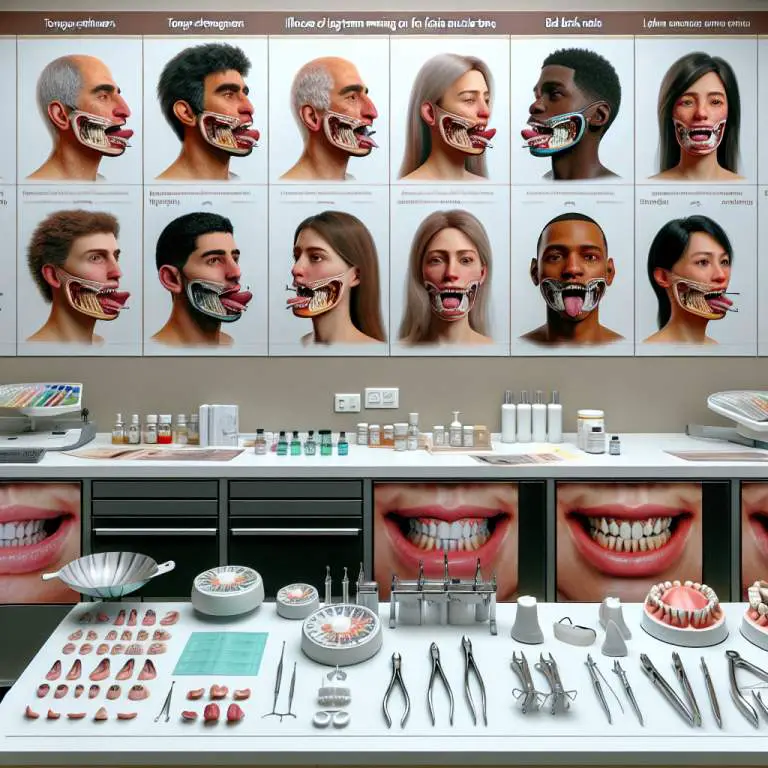Is there a point where mewing no longer produces changes, and maintenance is the focus?
Yes, there is a point where mewing may no longer produce significant changes, and the focus shifts to maintenance. This typically happens once the facial bones have fully developed and settled, usually in late adolescence or early adulthood. At this stage, continuing to practice mewing can help maintain the improvements achieved but is unlikely to cause further major transformations. Therefore, someone deeply involved in mewing should aim to maintain their results rather than expect continued dramatic changes.

How does mewing work to reshape the jawline and facial structure?
Mewing is a technique that involves positioning your tongue against the roof of your mouth. This position is supposed to help change the way your jawline and face look over time. The idea is that by keeping your tongue in this spot, you’re putting gentle pressure on the top part of your mouth.
This pressure can help make changes to your facial bones, especially if you’re still growing. For adults, it’s more about changing how the muscles in your face work together. This can lead to a sharper jawline and a more defined face shape if done regularly.
What are the signs that mewing is effectively working?
One sign that mewing might be working for you is feeling a bit of soreness in your jaw and chin area. This happens because you’re using muscles in a new way. It’s like when you start exercising different parts of your body and feel sore at first.
Another sign could be noticing small changes in how your jawline looks or how your bite fits together after several months of consistent practice. These changes can be subtle, so taking pictures over time might help you see them better.
At what age is mewing most effective, and why?
Mewing tends to be most effective for younger people, especially those who are still growing. This is because their bones are not fully hardened yet. When you’re young, the bones in your face are more flexible and easier to influence with techniques like mewing.
That doesn’t mean older people won’t see any benefits, but changes might take longer and be less noticeable. The best time to start would be before adulthood, but making healthy posture habits can always be beneficial regardless of age.
How long does it typically take to see noticeable changes from mewing?
The time it takes to see changes from mewing can vary a lot from person to person. Some might start seeing small differences in a few months, while for others, it could take years of consistent effort.
A lot depends on how often you practice mewing correctly throughout the day and whether you started at a younger age. Patience is key here since these kinds of changes don’t happen overnight.
| Phase | Description | Duration | Focus |
|---|---|---|---|
| Initial Adaptation | Getting accustomed to proper tongue posture and breathing techniques. | 1-3 months | Transformative |
| Muscle Strengthening | Building strength in the tongue, jaw, and neck muscles for maintaining posture. | 3-6 months | Transformative |
| Skeletal Adaptation | Bone structure begins to adapt; noticeable changes in facial structure may occur. | 6 months – 2 years | Transformative to Maintenance (Varies by individual) |
| Maintenance Phase | Maintaining the achieved posture and structural changes with less effort. td >< td >2 years+ td >< td >Maintenance td > tr > table > figure > Can mewing results be permanent, or do they require ongoing effort to maintain?Mewing results can indeed become permanent over time, but this usually requires consistent effort. The changes in jawline and facial structure are gradual and need continuous practice of proper tongue posture. However, if one stops practicing mewing after achieving desired results, there’s a risk that the muscles may revert to their original state. This is why ongoing effort is often recommended to maintain the improvements. Are there any risks or potential side effects associated with long-term mewing?While mewing is generally considered safe, long-term incorrect practice can lead to potential risks or side effects. One common issue is developing a misaligned bite if the tongue pressure is not evenly distributed. Additionally, excessive force or incorrect technique can strain the jaw muscles and temporomandibular joint (TMJ), leading to discomfort or pain. It’s important to follow proper guidance when practicing mewing. How can one transition from active mewing to maintenance mode?Transitioning from active mewing to maintenance mode involves gradually reducing the intensity of your practice while still maintaining correct tongue posture. Once desired results are achieved, it’s crucial to keep a natural and comfortable tongue position without exerting too much force. This means being mindful of your tongue’s placement throughout the day but not obsessively controlling its position. Regular check-ins on your posture and occasional reinforcement exercises can help maintain the benefits. What additional practices complement mewing for maintaining results?To complement mewing and help maintain its results, incorporating facial exercises can be beneficial. These exercises can strengthen jaw muscles, improve circulation, and support overall facial symmetry. Besides physical exercises, adopting a healthy lifestyle that includes a balanced diet and adequate hydration supports skin elasticity and muscle tone, further enhancing the aesthetic benefits achieved through mewing. Final ThoughtsMewing offers a natural way to improve facial structure and jawline definition, with the possibility of permanent results if practiced consistently. However, it requires patience and dedication as changes occur gradually over time. To maximize benefits and minimize risks, it’s essential to practice correctly and consider complementary habits that support overall facial health. With proper technique and maintenance efforts, individuals can enjoy lasting improvements from their mewing journey. |







